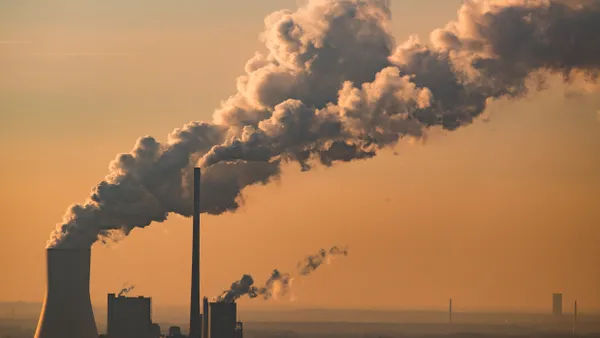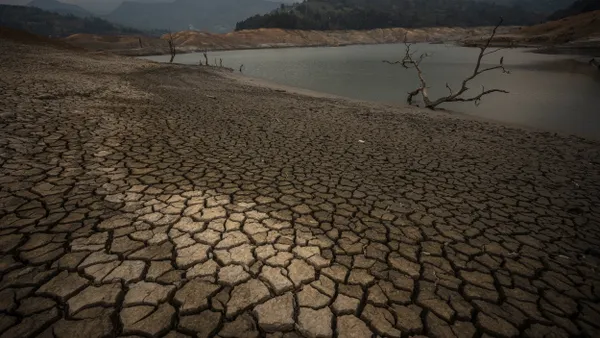The United Nations’ annual climate conference COP28, still has almost a week remaining, but the marquee day for climate finance pledges already took place Monday, and global governments are putting money on the table to help respond to the growing threat of climate change.
The first ever Global Stocktake accompanied this year’s conference, revealing that the world is far off track to keeping global warming under 1.5 degrees Celsius. While questions about phasing down or phasing out fossil fuels still abound, countries took the day’s theme in stride and opened up their checkbooks.
In all, Climate Nexus estimates more than 40 commitments were made Monday, according to an email sent to ESG Dive. Here’s a rundown of some of the biggest pledges and developments on the climate finance front.
Green Climate Fund has record funding round, U.S. pledges $3B
Heading into the conference’s finance day, five countries collectively pledged $3.5 billion to the global Green Climate Fund to help developing states respond to climate change. The world’s largest climate fund is currently undergoing its second replenishment, thanks to funding commitments from the United States, Italy, Portugal, Switzerland and Estonia.
The U.S. led the way with a $3 billion pledge, with the other four countries committing amounts in the millions. The additional funding builds on the $9.3 billion pledged by 25 countries in the previous round of funding held in October. The Green Climate Fund has now collectively attained $12.8 billion from 30 countries, a total that tops the $10 billion initially pledged during its first replenishment round of funding. GCF said the new pledges will allow the fund to bring more financial resources to developing countries from 2024-27.
COP28 president debuts climate finance think tank
COP28 President Sultan Al Jaber used Finance Day to announce the creation of a Global Climate Finance Centre. The climate finance think tank’s founding members include BlackRock, HSBC, the World Bank, The Glasgow Financial Alliance for Net Zero and the Abu Dhabi Global Market.
ADGM will headquarter the organization, which will focus on designing climate finance markets, developing frameworks and skill development. The think tank and research hub aims to collaborate with stakeholders across sectors and help create an environment that fosters investments into low-carbon and sustainable projects.
BlackRock CEO Larry Fink said the GCFC will help combine research and thought leadership during the transition, and asset managers will have a duty to help their clients navigate the transition.
“As we see more and more capital being directed towards investments that support the energy transition, the architecture of the financial system will continue to evolve and adapt,” Fink said on LinkedIn.
Multilateral Development Banks increase pledges
Multilateral Development Banks had a big finance day, with at least one fulfilling a G20 recommendation to triple climate financing.
The Inter-American Development Bank Group became the first to fulfill that directive by pledging to increase its climate financing for Latin America and the Caribbean to $150 billion over the next decade. IDB will assume the presidency of MDBs and Regional Development Banks Heads in 2024, and said it plans to place climate and nature at the group’s center.
Last week, the World Bank Group said it will devote 45% of its annual financing to climate projects for the fiscal year between July 1, 2024 and June 30, 2025. The bank previously set a goal to use 35% of financing for climate-related projects by 2025, but has already surpassed it with an average of 36.3% of funding being used for climate projects as of July 2022. Translated into dollars, the WBG will use more than $40 billion for climate projects during that fiscal year.
Japan and France also used the day to announce a commitment to support the African Development Bank and IDB’s mechanism for utilizing Special Drawing Rights for climate and development. The SDR is not a currency, but rather a reserve asset maintained by the International Monetary Fund to supplement member countries’ reserves. The euro and the Japanese yen are two of the five currencies weighted to define the SDR, along with the U.S. dollar, the British pound, and the Chinese Renminbi. According to the official COP28 site, Spain and the United Kingdom have also signaled a willingness to offer their support following further due diligence.











